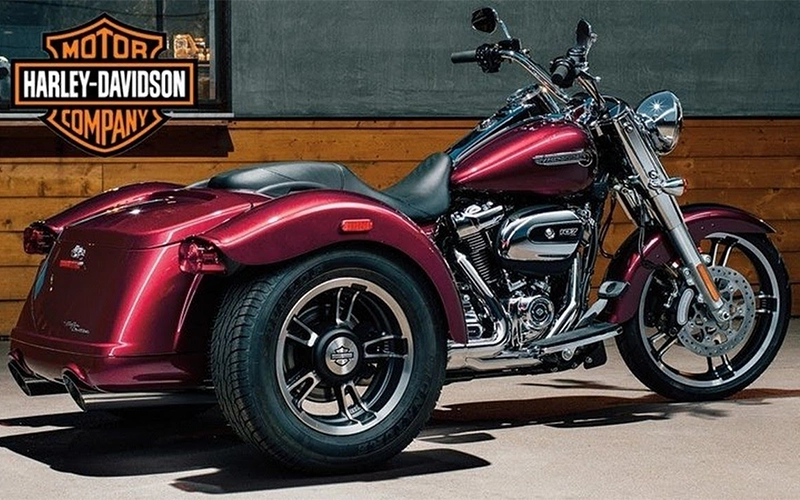Upgrading your Harley Freewheeler FLRT radiator cooler (2015–2017 models) is a smart move for enhancing engine performance and long-term reliability. As these trikes age, factory-installed radiators may not keep up with heat demands, especially in warmer climates or during long rides. In this guide, we’ll walk you through why and how to upgrade your radiator cooler, with helpful tips, tools, and product suggestions.
Why Upgrade the Radiator Cooler?
Your radiator cooler plays a vital role in regulating engine temperature. When it underperforms, the risk of overheating increases, potentially leading to:
- Reduced engine efficiency
- Premature wear of engine components
- Increased maintenance costs
- Poor rider comfort during long hauls
Upgrading to a high-performance radiator cooler ensures improved cooling capacity and longer engine life, especially in air-cooled V-twin engines like those in the FLRT.

What to Consider Before Upgrading
1. Compatibility
Ensure your new radiator cooler is specifically designed for the 2015–2017 FLRT Freewheeler. Check OEM part numbers and consult your manual or the manufacturer’s site.
2. Cooling Efficiency
Look for models with high fin density and increased coolant flow to maximize heat dissipation.
3. Ease of Installation
Some aftermarket kits are plug-and-play, while others require custom mounting or wiring. Review installation instructions beforehand.
4. Brand Reputation
Top aftermarket brands include:
- Jagg Oil Coolers
- UltraCool
- DK Custom Products
These brands are known for durability and effective cooling systems tailored to Harley-Davidson trikes.
Tools and Parts You’ll Need
Tools:
- Socket set
- Torque wrench
- Screwdrivers
- Hose clamp pliers
- Drain pan
Parts:
- Aftermarket radiator cooler
- New coolant (check Harley’s specs)
- Mounting hardware (usually included)
- Optional: Inline fan for added airflow

Step-by-Step Upgrade Guide
Prep Your Workspace
- Park the trike on a flat surface
- Let the engine cool completely
- Disconnect the battery
Drain the Coolant
- Place a drain pan under the cooler
- Remove the lower hose and drain fully
Remove the Old Cooler
- Detach mounting bolts and disconnect hoses
- Note routing for reinstallation
Install the New Radiator Cooler
- Attach hoses and secure with clamps
- Use new gaskets or seals if provided
- Torque bolts to spec
Refill Coolant and Test
- Fill the radiator with recommended coolant
- Start the engine and monitor for leaks
- Watch temperature gauge for normal range
Pro Tips for Maintenance
- Check coolant levels every few rides
- Inspect for hose cracks or leaks quarterly
- Clean the radiator fins regularly to avoid clogging

Frequently Asked Questions (FAQs)
1. Will installing a radiator cooler void my Harley warranty?
Not necessarily. Most upgrades won’t void the warranty if you use approved parts and follow proper installation procedures. Check your warranty policy or consult your dealer.
2. Can I install the radiator cooler myself?
Yes, many riders install it themselves using basic tools. Just be sure to follow instructions carefully and work on a cold engine.
3. How often should I check or clean the radiator cooler?
Inspect it every few months, especially before long rides. Clean fins using low-pressure air or a soft brush to remove bugs and debris.
4. Do I need to change the coolant when installing a new cooler?
It’s recommended. New coolant ensures optimal performance and prevents corrosion. Always use the type recommended for Harley-Davidson engines.
5. What’s the lifespan of an aftermarket radiator cooler?
With proper care, most quality aftermarket coolers last 5–10 years or more. Regular cleaning and inspections help extend their life.
6. Is an inline fan necessary for better cooling?
It’s optional but highly beneficial in hot climates or heavy traffic. Inline fans help maintain airflow when the bike isn’t moving fast enough.
Conclusion
Upgrading your Harley Freewheeler FLRT radiator cooler (2015–2017) is an investment in performance, reliability, and ride comfort. With the right tools, parts, and guidance, you can complete the installation confidently. Always prioritize reputable brands and consult professional help if needed.










